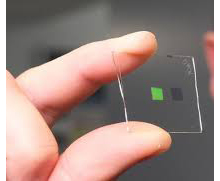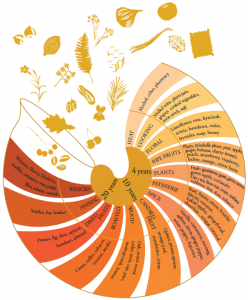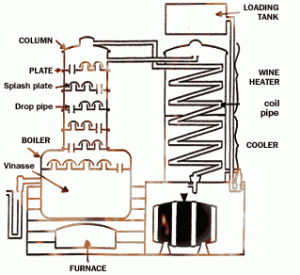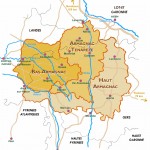Artificial Tasting Tongue Created
 Scientists have produced an artificial tasting tongue. It is made from sub-microscopic slices of gold and aluminium which create ‘tastebuds’ that are around 500 times smaller than the human equivalent. Subtle differences in how the metals absorb light allow the ‘tongue’ to identify individual spirits with more than 99% accuracy. Picking up differences in complex chemical mixtures, sometimes resulting from barrel type and length of maturation, it is hoped that the ‘tongue’ will be used to identify counterfeit products. Artificial tongues have been produced before, but this is the first time that two different types of nanoscale metal ‘tastebuds’ have been used so the results are faster and more accurate. So, is this a threat to our industry’s sommeliers? Perhaps not. It may well be more sensitive than the most highly tuned palates, but it cannot describe taste nor identify balance, skills which we specialise in here at Hermitage Cognacs. Those skills are of course subjective but put together with experience and knowledge of the marketplace our sommeliers and competition judges are certainly not out of a job yet. However, those who choose to undermine the industry by flooding the market with fake goods should take note.
Scientists have produced an artificial tasting tongue. It is made from sub-microscopic slices of gold and aluminium which create ‘tastebuds’ that are around 500 times smaller than the human equivalent. Subtle differences in how the metals absorb light allow the ‘tongue’ to identify individual spirits with more than 99% accuracy. Picking up differences in complex chemical mixtures, sometimes resulting from barrel type and length of maturation, it is hoped that the ‘tongue’ will be used to identify counterfeit products. Artificial tongues have been produced before, but this is the first time that two different types of nanoscale metal ‘tastebuds’ have been used so the results are faster and more accurate. So, is this a threat to our industry’s sommeliers? Perhaps not. It may well be more sensitive than the most highly tuned palates, but it cannot describe taste nor identify balance, skills which we specialise in here at Hermitage Cognacs. Those skills are of course subjective but put together with experience and knowledge of the marketplace our sommeliers and competition judges are certainly not out of a job yet. However, those who choose to undermine the industry by flooding the market with fake goods should take note.

 For many years we have been using a very impressive aroma wheel, set up by the BNIC, to help us describe the different aromas detected in cognac. I suppose it was inevitable that the Armagnaҫais would come up with something similar. So, instead of a wheel,
For many years we have been using a very impressive aroma wheel, set up by the BNIC, to help us describe the different aromas detected in cognac. I suppose it was inevitable that the Armagnaҫais would come up with something similar. So, instead of a wheel,  Armagnacs are the earliest examples of distilled wines known in France. Traditionally they are made using the Folle grape although others, including Colombard, Ugni Blanc and even more recently, the Baco all contribute to its flavour. Initially distillations were on a pot still but by the 19th century the continuous still was more highly favoured. The distillation process of armagnac allows the spirit to be distilled at a much lower alcohol content range than that of its big brother cognac, produced 100 miles to the north. The lower range produces a greater fruitiness (but less refined) flavour in the spirit.
Armagnacs are the earliest examples of distilled wines known in France. Traditionally they are made using the Folle grape although others, including Colombard, Ugni Blanc and even more recently, the Baco all contribute to its flavour. Initially distillations were on a pot still but by the 19th century the continuous still was more highly favoured. The distillation process of armagnac allows the spirit to be distilled at a much lower alcohol content range than that of its big brother cognac, produced 100 miles to the north. The lower range produces a greater fruitiness (but less refined) flavour in the spirit.